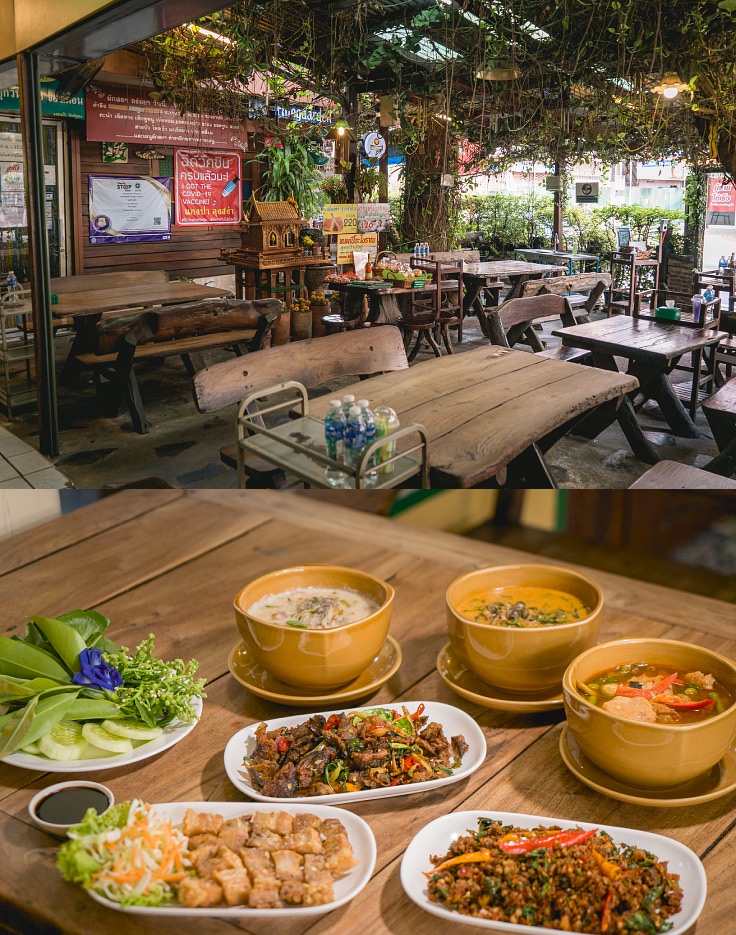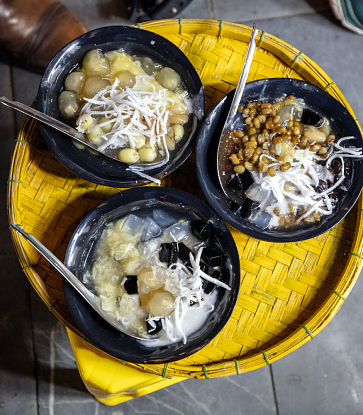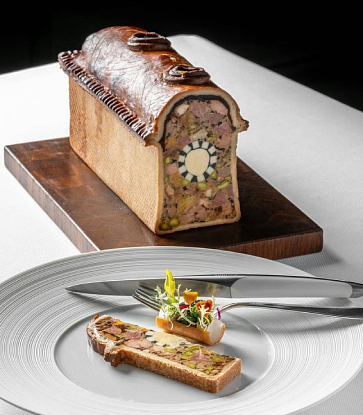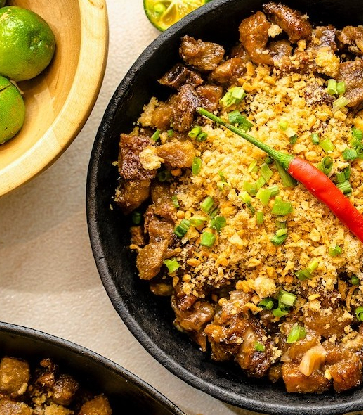It’s nothing short of charming when you come across a restaurant that’s been passed down in a family— from father to son to grandson. Many times, this ongoing chronicle of good tastes can pan out for decades or even centuries. Beyond accumulating the right skills and experience, it’s also the art of continuously improving and adapting to modern times.
All the while, what’s most important is to retain the authenticity of the dishes. If a restaurant manages to tick all those boxes, the result is a distinctive character guests will remember and flavours that are deliciously just right. If that balance is well achieved, there’s no doubt that an eatery’s popularity will spread through word of mouth, eventually rendering it a neighbourhood favourite that those both near and far want to visit.

Just north of Bangkok in Nonthaburi, Kaeng Pa (Loong Sa-Nga) is one such family business that has been passing the baton of good taste from father to son. A longstanding local favourite for the past 20 years, the place is now overseen by Uncle Sa-Nga’s son, Sutiphun Sookbang.
The making of Kaeng Pa (Loong Sa-Nga)
Many decades ago, Sa-Nga Sookbang and his wife, Kornthip Sookbang, as well as their son Sutiphun Sookbang, first entered the food industry by opening a small coffee and snack spot at their home in Prachachuen. In 1981, they moved to the area where Kaeng Pa Lung Sa Nga currently stands and opened a restaurant. From their initial beginnings selling made-to-order dishes, the restaurant shifted to local items and jungle cuisine under the name “Ran Kaeng Pa” (Jungle Curry Restaurant). The eatery then went through a long hiatus. Upon its eventual return, only Sa-Nga and his wife ran the restaurant, as their son went on to oversee other businesses.
Sa-Nga passed away after running the restaurant for 10 years. Sutiphun, his son, stepped in and started by adding his father’s name to the eatery, thus christening it “Kaeng Pa Lung Sa-Nga”. Sa-Nga had always loved to seek out delicious restaurants and thoroughly enjoyed perusing markets to shop for food. It comes as no surprise that his son has inherited these habits and also has a great love for delicious food. When the restaurant opens, Sutiphun is still the one shopping for ingredients and supplies.

The charming flavours of Loong Sa-Nga
“Many people who see the restaurant’s name ‘Kaeng Pa (Loong Sa-Nga)’ usually imagine that we only serve funky jungle dishes. In truth, jungle cuisine is only a part of our menu, as we want to be known as a restaurant that serves local cuisine. Jungle cuisine is a part of local cuisine, because every region has a jungle. In every region and household, you’ll find various jungle dishes with their own distinct flavours. We don’t only serve extremely spicy jungle food. We do offer them, but there are also mild to medium spicy levels, as well as completely non-spicy dishes. We recommend you order dishes of many different flavours so they can complement each other,” Sutiphun explained.
Jungle cuisine can be categorised according to its region and the seasonal ingredients from there. This ranges from meats to vegetables, from fruits to herbs. Sometimes, meat is not even present, or it may not have the fiery palate you would usually expect of jungle food. Without a doubt, the outstanding characteristic of jungle cuisine is in its large variety, as well as its casualness. It’s the sort of food that feels like home-cooking, because it can be enjoyed every day, thanks to its humble price tag. There’s also no need to get all dressed up for this meal, so everyone can easily drop by to sate their hunger at Kaeng Pa (Loong Sa-Nga).

The secrets to good taste
When it comes to ingredients, Sutiphun is in charge of trawling the markets to source everything. Many of their main ingredients come from Ayutthaya, Ang Thong, or Thai markets. After finding everything needed, it is all passed on to the kitchen staff. The head chef is over 70 years old and has been overseeing the kitchen since Sa-Nga’s time. She is responsible for the food’s quality control. No dish leaves the kitchen without her approval.
One charming factor you’ll find in the recipes at Uncle Sa-Nga is the usage of prik pran (chilli peppers), a local spice with characteristics similar to makhwan, another pepper known for its deep aroma. As the main ingredient in all fiery dishes, it lends a particular heated spiciness, as well as a distinctive fragrance.

What to order?
Whatever you do, don’t miss their kaeng pa pla krai (fishball jungle curry). This popular dish obviously features the celebrated prik pran. A lot of intense kneading goes into forming the curry’s fishballs to create their delightfully chewy yet soft texture. The curry itself sees fingerroot, turkey berry, and countless other ingredients come together to create a jungle curry with spicy flavours that you won’t be able to stop slurping down.
Duk yang pad keemao (spicy stir-fried catfish) and seekrong on pirot (angry ribs) are shoo-in favourites for jungle cuisine fans. Although the meats used are not anything out of ordinary, these dishes both showcase a fiery and flavourful tastiness that two thumbs up still cannot capture. The catfish is freshly grilled. The flesh is then removed and fried with spices such as fingerroot, kaffir leaves, and holy basil leaves. Of course, young green peppercorns are also thrown in to amp up the heat. As for seekrong on pirot, only pork ribs with soft cartilage is used. Finely chopped, it is then stir-fried with curry paste and countless herbs. Both dishes go hand-in-hand with a plate of steaming rice or can also work as a lone snack that is deeply satisfying.

Break the heat with the salted fried pork belly. It’s deceptively simple, but remains a perennial favourite that most people order whenever they drop by. The pork belly has little fat and is blanched before being sun-dried. After that, it is fried until golden and crispy, getting a dash of sea salt before it is served.
Besides the fishball jungle curry, do try the kaeng kua hoi khom (river snail curry). This thick, coconut milk-based curry includes betel leaves, climbing wattle, and munchy bits of river snail. Another good option to wash down the heat. Continue on with tom kati pla salid bai makham (gourami and young tamarind leaves in coconut milk). Pieces of sun-dried gourami are deep fried and boiled in coconut milk with young tamarind leaves and tamarind juice. Add in a touch of red onions and bird’s eye chillies and you’ve got an aromatic and smooth soup to cancel out any spiciness.

The future of jungle food
“In this age, there are a lot of new novelties, be it new restaurants, styles of food, ways people season food, all the way to new ingredients. But if you look at jungle food carefully, you’ll notice that it has always been like this from 20-30 years ago until today. The way you stir-fry, boil, brew, and roast everything has remained the same. Ingredients change according to the seasons, but that is nature’s cycle. It’s likely to continue that way, as long as there is still a demand for it. People who want to eat some jungle food know exactly what they will be eating and what they are in for.”
Hero image: © Ratchada Kongthong / MICHELIN Guide Thailand















%20-%20Aman%20Nai%20Lert.jpg)



